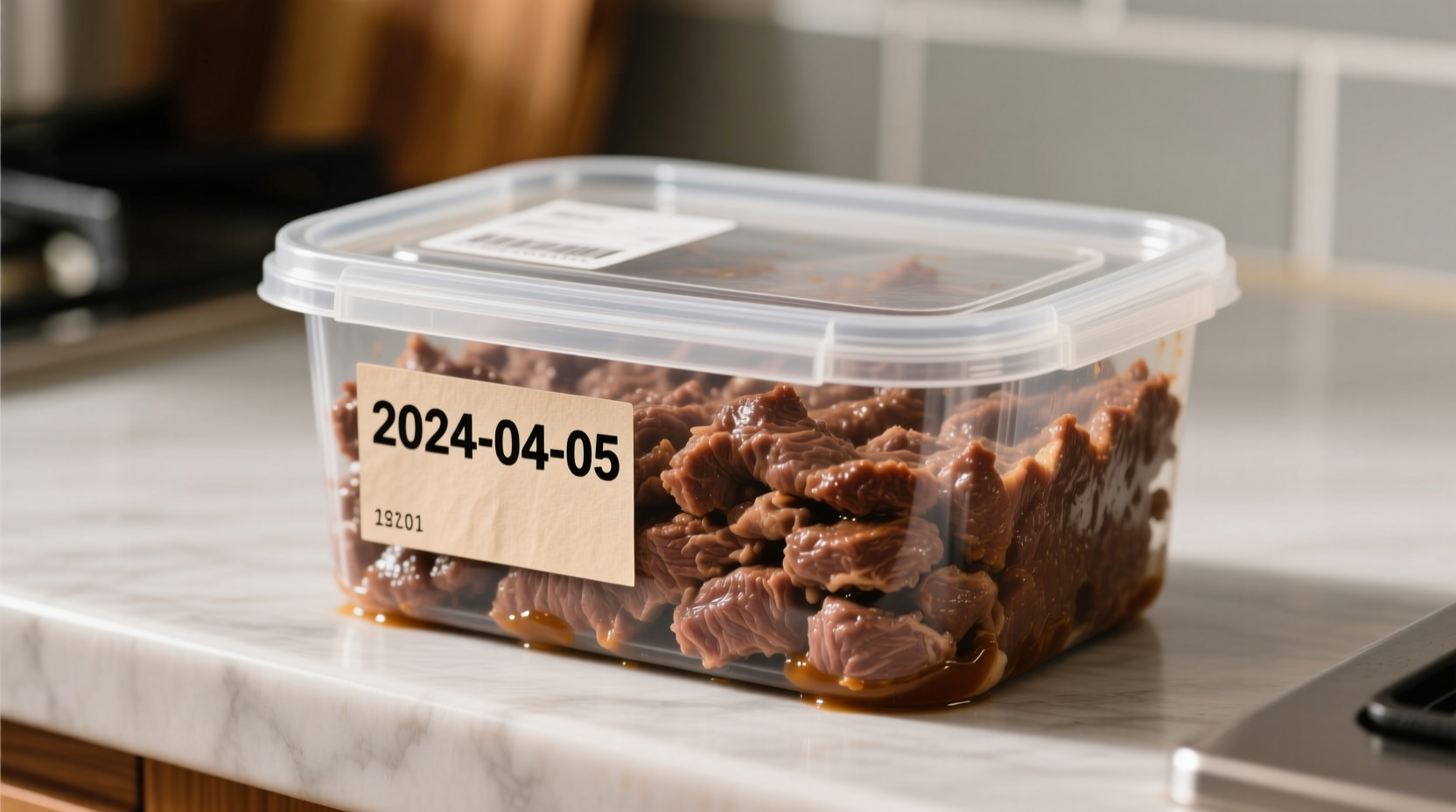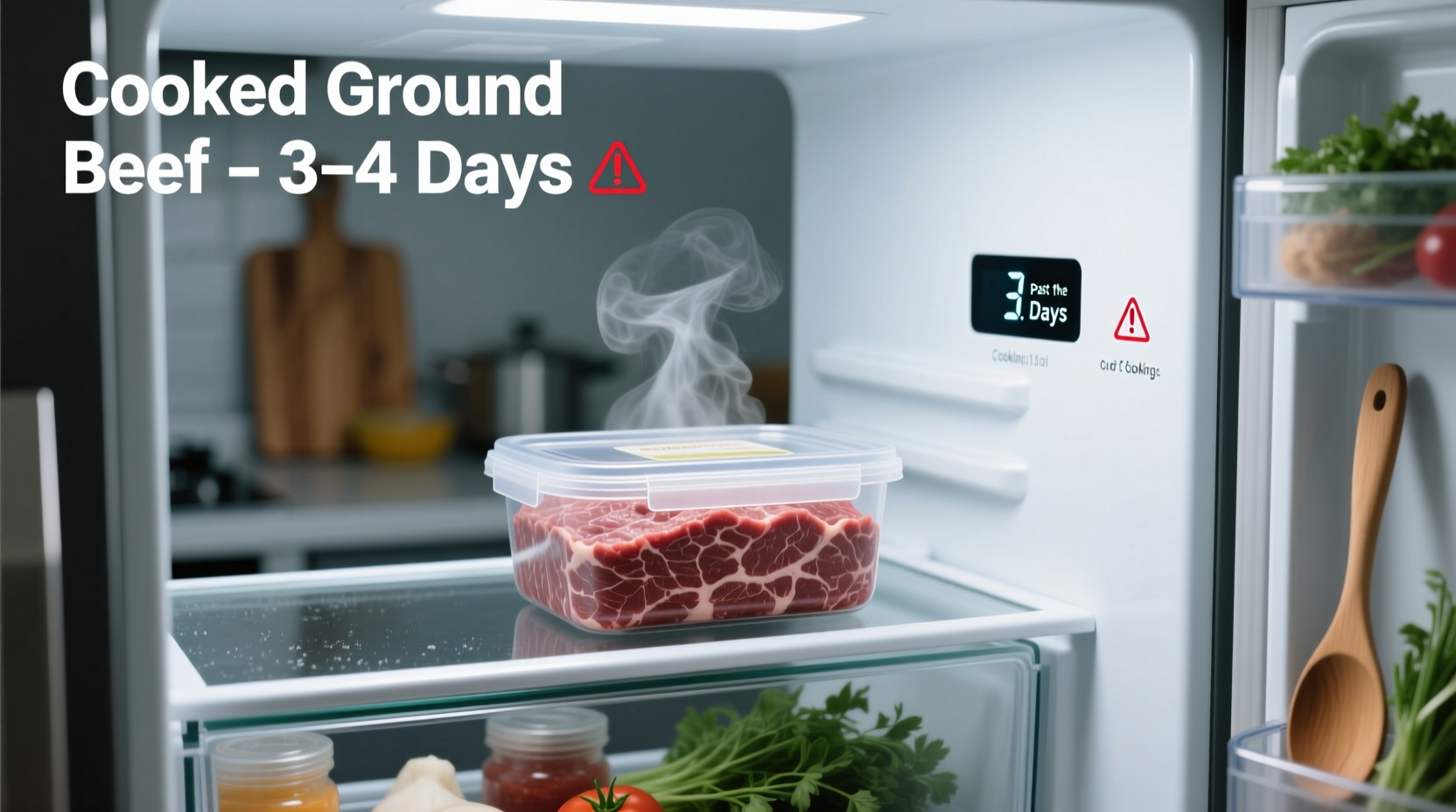Why the 3-4 Day Rule Matters for Your Safety
Understanding the science behind food safety helps you make informed decisions in your kitchen. Bacteria like Staphylococcus aureus and Listeria monocytogenes multiply rapidly in the temperature danger zone between 40°F and 140°F. The USDA Food Safety and Inspection Service confirms that cooked ground beef enters this risk zone within 2 hours at room temperature, accelerating spoilage.
| Storage Method | Safe Duration | Temperature Requirement |
|---|---|---|
| Refrigerator | 3-4 days | 40°F (4°C) or below |
| Freezer | 2-3 months | 0°F (-18°C) or below |
| Room Temperature | 2 hours max | Above 40°F (4°C) |
Proper Storage Techniques That Actually Work
Following correct storage procedures significantly impacts how long your cooked ground beef remains safe. The FDA Food Code specifies that dividing large portions into shallow containers (no deeper than 2 inches) allows for faster cooling. Always use airtight containers or heavy-duty freezer bags to prevent cross-contamination and moisture loss.
Professional chefs recommend labeling containers with both preparation and expiration dates. This simple practice reduces food waste while ensuring safety. Remember that refrigerator temperature consistency matters—place cooked ground beef on middle shelves rather than in the door where temperatures fluctuate.

Recognizing When Ground Beef Has Spoiled
Don't rely solely on smell to determine safety. The USDA warns that harmful bacteria may not produce noticeable odors. Instead, check for multiple indicators:
- Texture changes: Slimy or sticky surface indicates bacterial growth
- Mold presence: Any visible fuzzy spots mean immediate discard
- Off odors: Sour or ammonia-like smells signal spoilage
When in doubt, throw it out. The CDC reports that foodborne illnesses cause approximately 48 million illnesses annually in the United States—many preventable through proper food handling.
Extending Shelf Life: Freezing and Reheating Guidelines
Freezing cooked ground beef properly maintains both safety and quality. The National Center for Home Food Preservation recommends spreading portions in single layers on baking sheets before transferring to freezer bags. This prevents clumping and ensures even freezing.
When reheating, always bring cooked ground beef to an internal temperature of 165°F as measured by a food thermometer. The USDA confirms this temperature destroys potential pathogens. Never partially reheat and then refrigerate leftovers—that practice creates ideal conditions for bacterial growth.
Common Storage Mistakes Home Cooks Make
Even with good intentions, many home cooks compromise food safety through common errors:
- Leaving cooked meat on the counter to cool completely
- Using containers with inadequate seals
- Storing near raw meats in the refrigerator
- Ignoring refrigerator temperature fluctuations
- Assuming "just one extra day" won't cause problems
Food safety experts emphasize that the 3-4 day rule isn't arbitrary—it's based on bacterial growth studies conducted by the USDA Agricultural Research Service. Their research shows that pathogenic bacteria can double in population every 20 minutes under ideal conditions.











 浙公网安备
33010002000092号
浙公网安备
33010002000092号 浙B2-20120091-4
浙B2-20120091-4